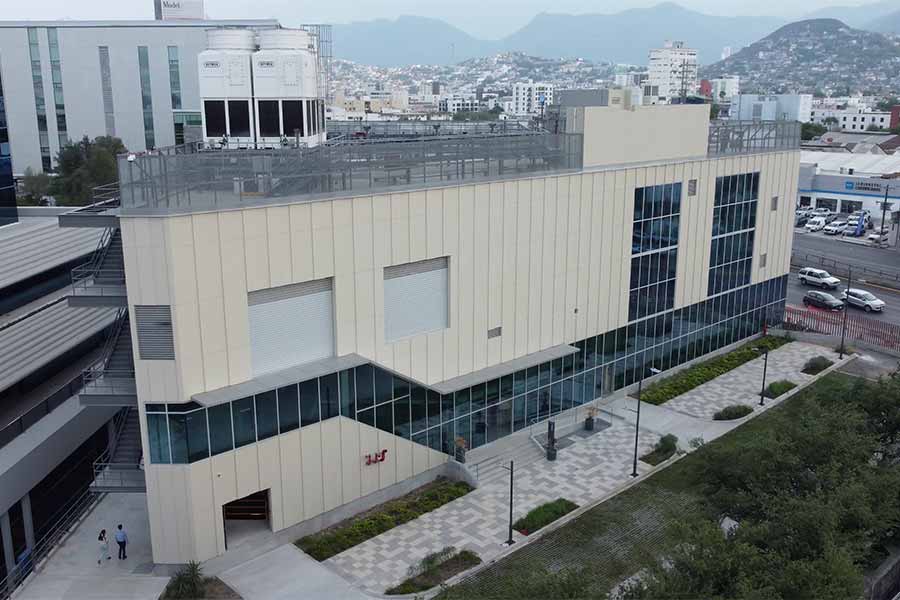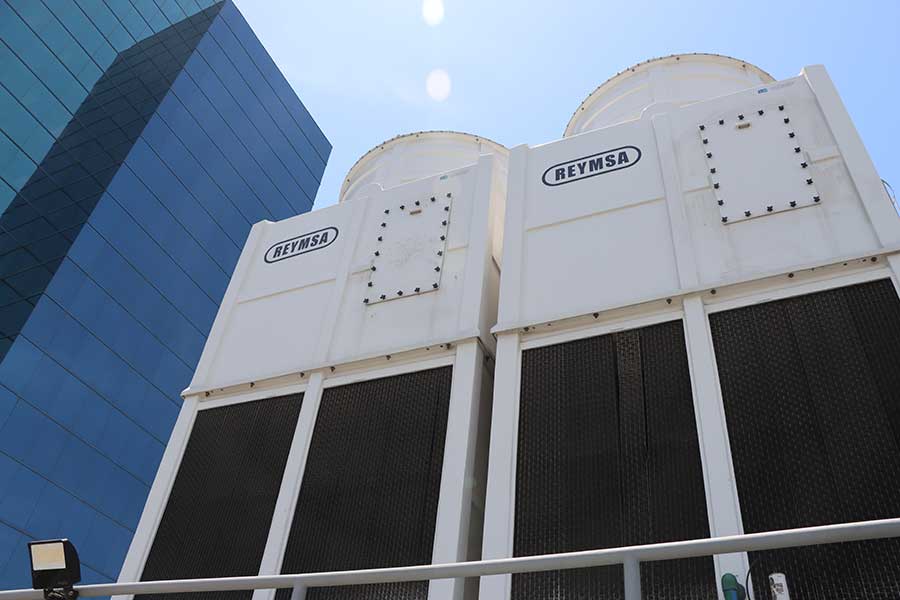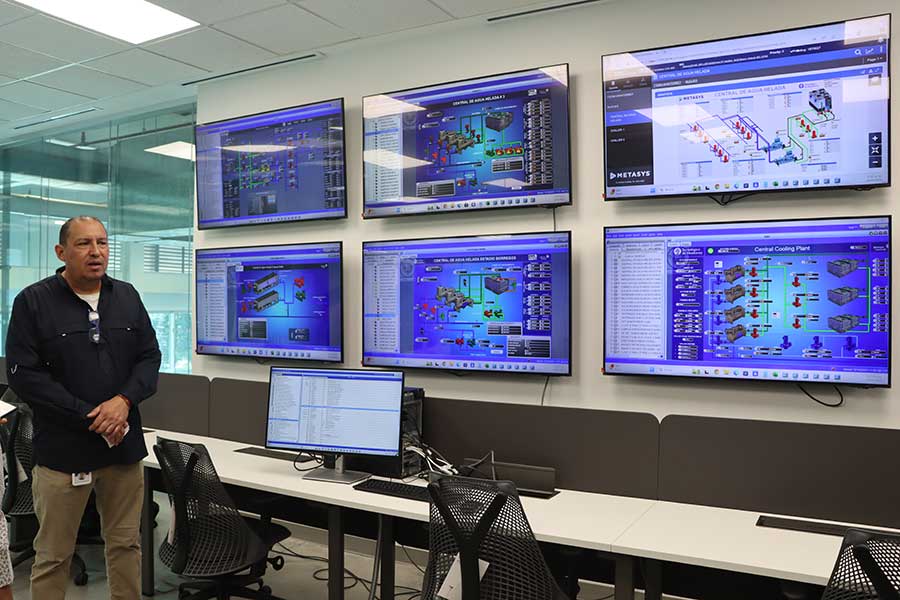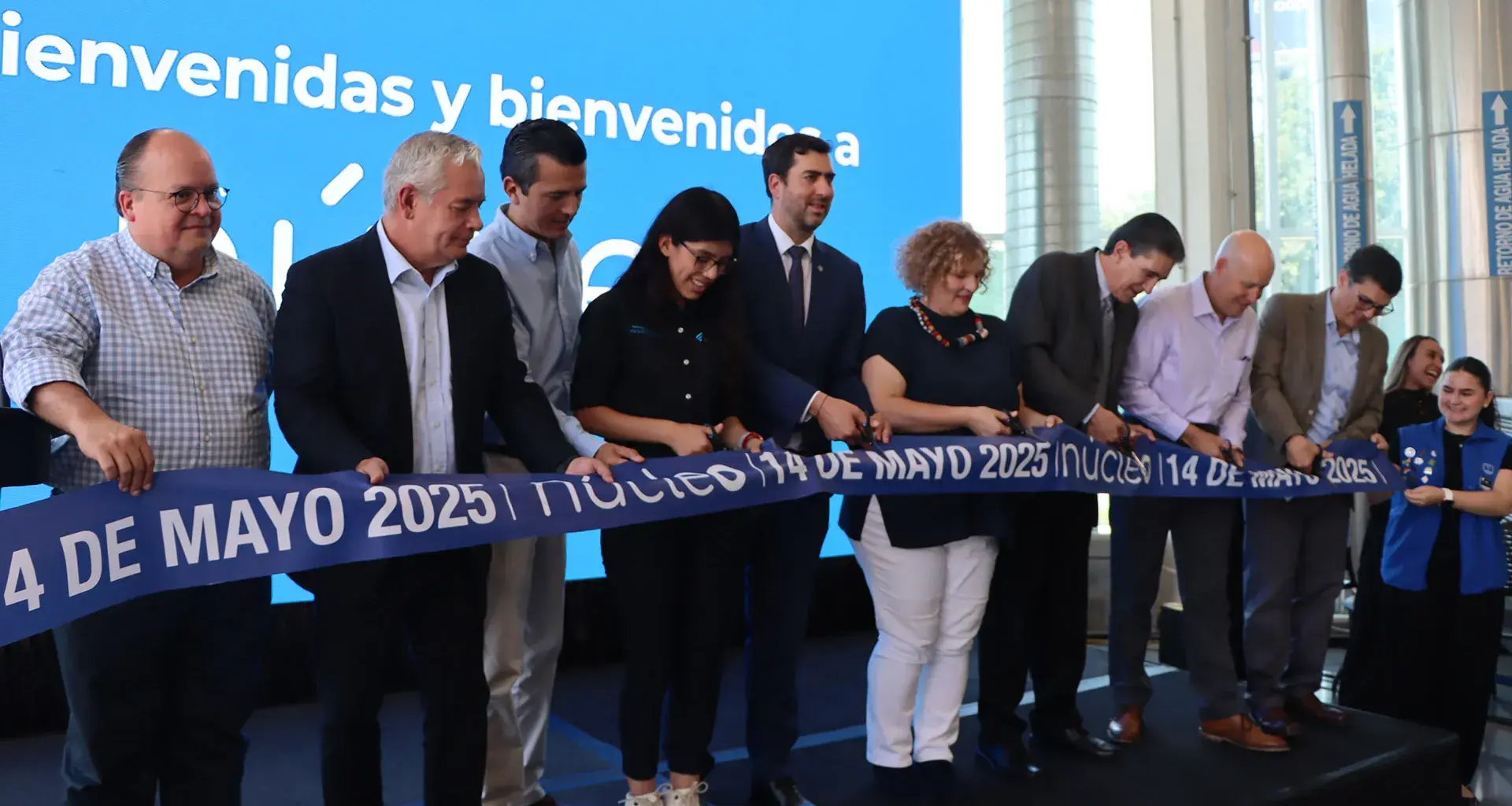The Tec has inaugurated Núcleo, the new Tec de Monterrey district power plant that integrates energy generation and management systems to reduce the institution’s environmental impact.
This new space was presented via distritotec in line with Ruta Azul and the institution’s 2025 Sustainability and Climate Change Plan.
One of the benefits Núcleo provides is a reduction of up to 30% of energy consumption per square meter for air conditioning service.
This translates into a reduction of up to 30% in greenhouse gas emissions for new buildings, resulting from the services that will now be centralized.
In this way, Núcleo becomes an active part of efforts to build a sustainable future, promoting a proactive culture to tackle global warming.

“Núcleo represents a huge move toward mitigation, adaptation, training, research, community outreach, and culture. Having it next to an iconic avenue such as Eugenio Garza Sada sends a signal that our commitment to the environment is clear.
“My thanks to all those who have worked for many years to make this building a reality,” said Tec Rector Juan Pablo Murra Lascuráin at the inauguration on May 14.
This new district plant will provide chilled water and thermal and electric power generation services, as well as combine energy generation systems over a wide geographic area.
Núcleo will deliver services to more than 30 buildings on the Monterrey campus, such as:
- Air conditioning
- Heating
- Drinking water
- Fire protection system
- Electrical distribution
“Núcleo is now part of this commitment, with which we aspire to build a sustainable future.” – Inés Sáenz
Infrastructure added to the Sustainability Plan
The opening of Núcleo is expected to help Tec de Monterrey operate more efficiently by reducing its environmental footprint and contributing to the sustainable development of the campus and its surrounding areas.
“In 2019, the Tec joined the Race to Zero initiative to become a net zero emissions institution by 2040, a significant commitment because it involves reducing at least 90% of all greenhouse gases emitted by the institution.
“Núcleo is now part of this commitment, with which we aspire to build a sustainable future,” said Inés Sáenz, Vice President of Inclusion, Social Impact, and Sustainability.
In this initial phase, Núcleo provides air conditioning, drinking water, electrical distribution, and fire protection system services to the EXPEDITION FEMSA and Hall of Residence 1 buildings.
It is later expected to supply the main campus and mixed-use buildings such as the Wellness Center.
For its final phase, this new infrastructure will provide a cooling capacity of 14,200 tons.
“Núcleo is a huge move toward mitigation, adaptation, training, research, community outreach, and culture.” – Juan Pablo Murra

How does Núcleo work?
Núcleo consists of 6 main systems spread across a basement, four floors, and a rooftop.
The function of each of these systems is presented below.
Heating, ventilation and air conditioning system: Generates chilled water for cooling and hot water for heating, which is distributed via three secondary underground circuits to the Monterrey Innovation District area.
Domestic water system: Supplies water to the cisterns of the various buildings within the Monterrey Innovation District area, using a pumping system housed inside the building.
Electrical system: Distributes medium-voltage electrical power to the complex. The electricity will be distributed radially, using banks of underground ducts.
Fire protection system: Designed to distribute water to the various buildings within the Monterrey Innovation District area using a pumping system housed inside the building.
Irrigation system: Supplied directly from the campus wastewater treatment plant and will be housed inside Núcleo in a 60-cubic-meter cistern.
BMS System: The Central Building Management System will be used to manage, monitor, and control the various mechanical, electrical, and hydraulic systems to ensure optimal use of resources within the building.

Núcleo as a living laboratory
Núcleo was also presented as a living laboratory in which Tec students will be able to study and create solutions focused on energy efficiency and climate change mitigation.
“This building provides infrastructure that represents a huge step forward into the future and the sustainability we’re building as a community.
“It also aligns with all the Monterrey Innovation District strategies in which researchers and companies will be able to accelerate the transfer of knowledge,” said Mario Adrián Flores Castro, Vice President of the Monterrey region and General Manager of the Monterrey campus.
READ MORE:





